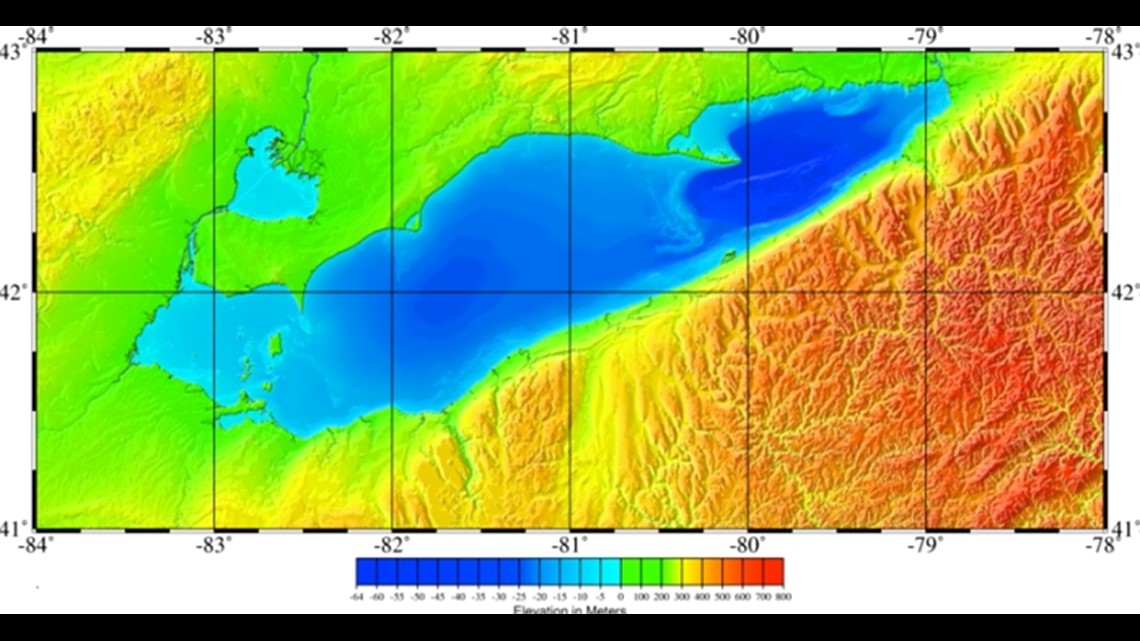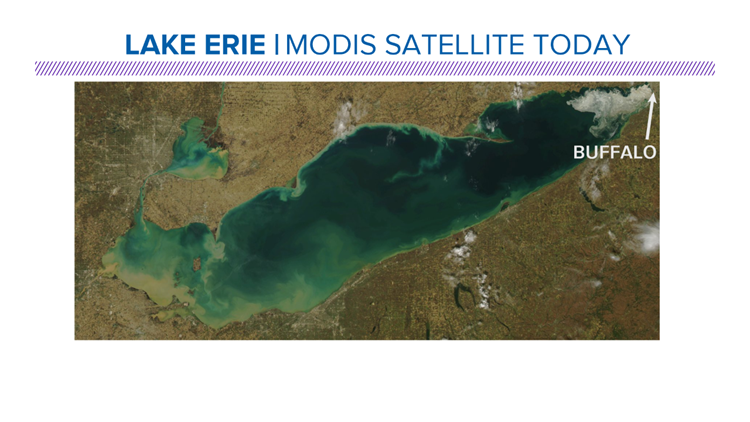CLEVELAND — While temperatures around Northeast Ohio soared into the 70s today, the icy coating on Lake Erie lingers.
A small area of Lake Erie is still covered in ice. How is this possible?
The first clue is the depth of Lake Erie. While it IS the shallowest of all of the Great Lakes at an average depth of 66 feet, it still has variations.
The west end of the Lake is the shallow end, which the eastern 2/3rds of the Lake are considerably deeper.


At 210 feet down, the deepest point sits in an area known as the Long Point Escarpment in the Eastern Erie Basin.
Shallow water will warm up the fastest, which the deeper end is sluggish to heat. Throw in weather and currents in the Lake, and you have the making for temperature variations that are not only horizontal but vertical too.
So the deeper, cooler end will hold ice the longest. This ice is also trapped by prevailing westerly wind. Typically ice will float wherever the wind pushes it, but once it is trapped it solidifies.
The area of ice is melting from west to east, albeit slowly.
Also on the MODIS image, you can see the mud and silt that has been flowing out into Lake Erie after the weekend rain.
Don't worry, as spring continues the water will be warming. Water temperatures make it into the 70s during the summer, with surf temperatures (at the shoreline) getting into the 80s.



